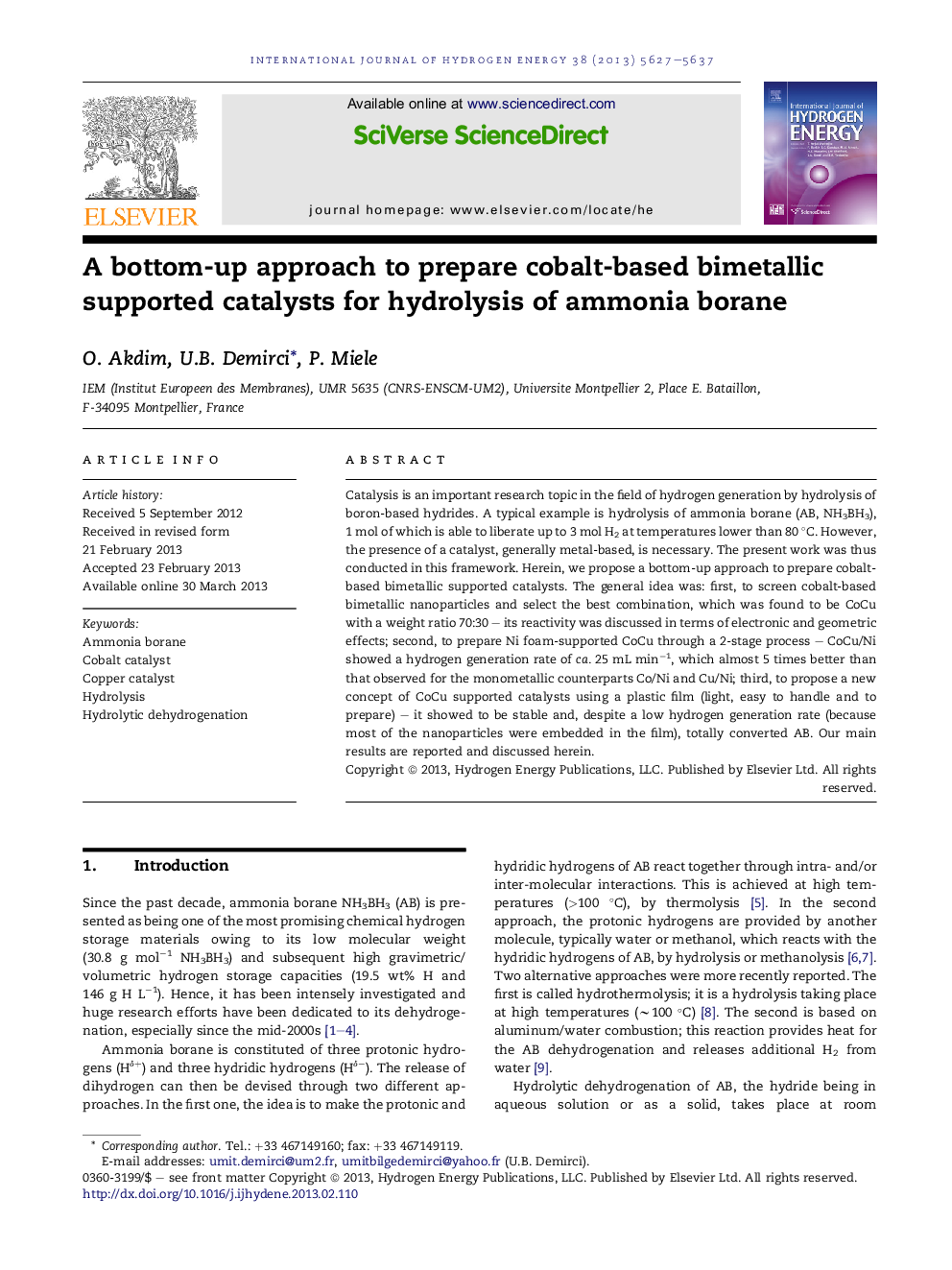| Article ID | Journal | Published Year | Pages | File Type |
|---|---|---|---|---|
| 1281671 | International Journal of Hydrogen Energy | 2013 | 11 Pages |
•Cobalt-based bimetallic catalysts were prepared for hydrolysis of ammonia borane.•A bottom-up approach, from nanoparticles to shaped catalysts, was considered.•The combination CoCu showed improved reactivity in comparison to Co.•CoCu was successfully supported on Ni foam and the shaped catalyst was reactive.•A new concept of shaped catalyst, using plastic film as support, is proposed.
Catalysis is an important research topic in the field of hydrogen generation by hydrolysis of boron-based hydrides. A typical example is hydrolysis of ammonia borane (AB, NH3BH3), 1 mol of which is able to liberate up to 3 mol H2 at temperatures lower than 80 °C. However, the presence of a catalyst, generally metal-based, is necessary. The present work was thus conducted in this framework. Herein, we propose a bottom-up approach to prepare cobalt-based bimetallic supported catalysts. The general idea was: first, to screen cobalt-based bimetallic nanoparticles and select the best combination, which was found to be CoCu with a weight ratio 70:30 – its reactivity was discussed in terms of electronic and geometric effects; second, to prepare Ni foam-supported CoCu through a 2-stage process – CoCu/Ni showed a hydrogen generation rate of ca. 25 mL min−1, which almost 5 times better than that observed for the monometallic counterparts Co/Ni and Cu/Ni; third, to propose a new concept of CoCu supported catalysts using a plastic film (light, easy to handle and to prepare) – it showed to be stable and, despite a low hydrogen generation rate (because most of the nanoparticles were embedded in the film), totally converted AB. Our main results are reported and discussed herein.
